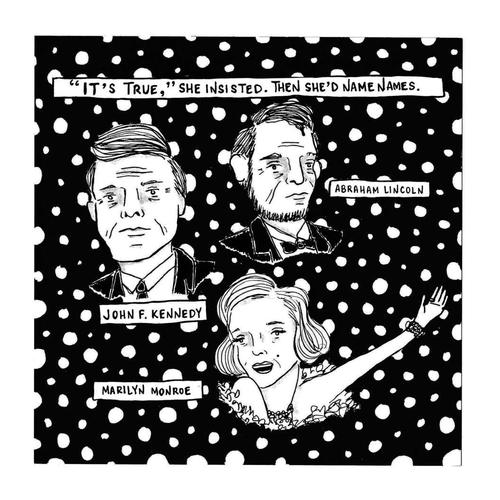Sanpaku’s Kate Gavino on Patterns, Perspective & Pacing
Art by Kate Gavino Comics Features Kate Gavino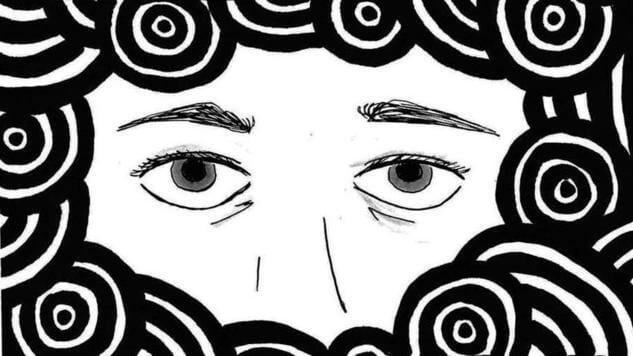
The word sanpaku is Japanese, meaning a belief that being able to see the white of a person’s eyes on three sides around their iris indicates they are doomed. Many of the initial announcements about Kate Gavino’s new book, out this week from BOOM! Studios’ Archaia imprint, focused solely on that word and its meaning, as if that was Sanpaku’s full focus. Instead, the book tells a host of intersecting stories, with a girl’s sanpaku obsession serving as the string that ties them all together. Though the book is written in the first person and draws from Gavino’s own experiences, it is not a memoir.
Gavino’s previous book, Last Night’s Reading, was printed after the success of her webcomic of the same name. Last Night’s Reading featured quotes from, and portraits of, all sorts of creative people, many of them rendered in playful but monochromatic colors on white. In contrast, Sanpaku is exclusively in black and white, each page featuring a different background pattern. Gavino draws individual characters in detailed but slightly stiff and sketchy lines; character features and reactions are often outsized, and it lends a sense that the reader is getting a peek into a journal or diary drawn by a young girl as she experiences conflict and discovery alike. More Fun Home or Displacement than Smile or Sisters, Sanpaku is an even exploration of the awkward age where childhood has ended but adulthood has not yet begun, influenced by thoughts on race, culture, religion, food and language.
In advance of Sanpaku’s publication, Paste exchanged emails with Gavino to discuss the book’s pattern work, her approach to pacing and how leaving Texas made her fall in love with the state after all.
![]()
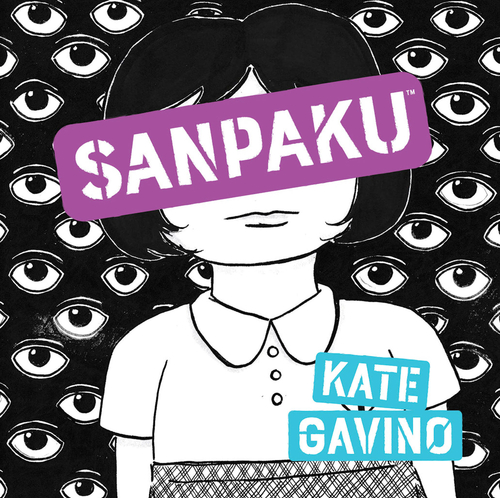
Sanpaku Cover Art by Kate Gavino
Paste: Sanpaku is a sequential story where your previous work, Last Night’s Reading, is more about individual moments. Did you discover any unexpected challenges when you started working on the narrative structure of Sanpaku?
Kate Gavino: Marcine’s story of discovering the concept of sanpaku is fairly linear, but I knew I wanted stories of her grandmother’s life throughout the book. Many families, particularly immigrant ones, hold onto secrets for lifetimes. It can take time to uncover the truth, and this happens to Marcine with her grandmother. Because of this, we learn more about her grandmother’s life in fragments, mirroring the pace Marcine is learning them.
Paste: There are a lot of overlapping identities and cultures at play in Sanpaku. Religion, race, food, sexuality and language all help paint a complicated picture—how did you juggle these sometimes conflicting, controversial elements?
Gavino: As a kid, I wasn’t good at compartmentalizing, and I made Marcine the same way. When she begins to question Catholicism because of sanpaku, it ends up affecting her diet, her friendships, her perception of people—her whole life, basically. I wanted the book to handle these changes the same way a confused 12-year-old would: with intense emotions and sometimes overboard reactions. She takes on everything at once, no matter how unfeasible.
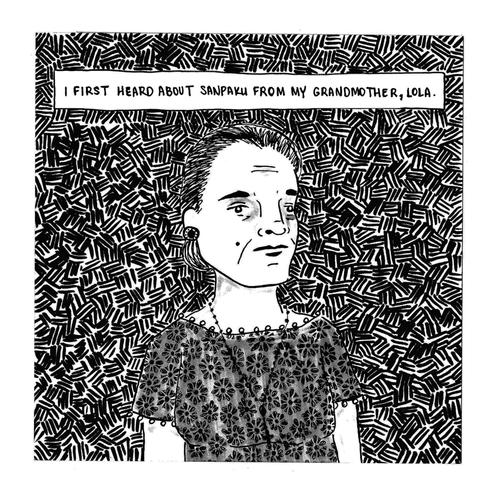
Sanpaku Interior Art by Kate Gavino
Paste: In some instances, you provided a lot of background around events or people that play pivotal parts in the story, but there were other words or places that you left up to the reader to interpret. How did you choose what to contextualize more explicitly and what to leave up to the reader to figure out themselves?
Gavino: At 12 years old, Marcine maintains a lot of her childish tendencies, and that includes accepting certain truths implicitly. If you grow up with a grandmother who tells you that falling asleep with wet hair will give you cancer, you go on accepting that as a fact for some time. Marcine questions big things, like religion and her sexuality, but she tends to accept intimate, smaller truths—like the life-changing power of a particular church hymnal—more easily.
Paste: Sanpaku portrays the Texas of your childhood, but since then you’ve lived in Brooklyn and Paris, France. Do you think that your experiences living elsewhere changed how you reflected on Texas? And how did your perspective on both American and European comics inform your process?
Gavino: I grew up in the Houston suburbs, desperate to leave. But I found that after leaving, my fondness for the city only grew. Now I brag about its food, diverse culture and people to strangers, but I don’t think that appreciation would’ve blossomed if I hadn’t left. Texas is definitely its own country, and I don’t think anyone who grew up there can leave without it imprinting upon you in some way.
I’ve only lived in Paris for a few months, but during this time, I’ve noticed that graphic novels in particular are much more mainstream over here. I’ll ride the Metro and see people of all kinds reading books by Julie Maroh or Craig Thompson. In my own neighborhood, I live within walking distance of three great comic book and graphic novel stores. It’s refreshing to see these books not considered niche reading material.
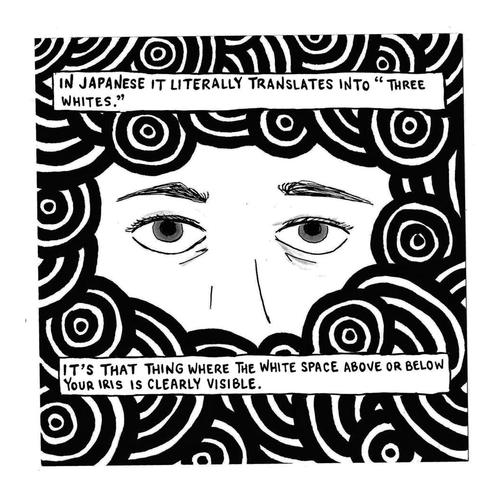
Sanpaku Interior Art by Kate Gavino
Paste: One of the most striking things about Sanpaku is the patterns you use in the backgrounds of most pages, each one unique. Was that part of your plan for the book from the beginning? Did something specific inspire that motif?
Gavino: The patterns in the book are inspired by origami paper patterns. Since the book was drawn by hand as opposed to digitally, there was something meditative about drawing out each pattern. I tend to work quite fast, and the process of creating this book was a lesson in slowing down for me. Drawing so many of these patterns enabled me to do that.

Sanpaku Interior Art by Kate Gavino
